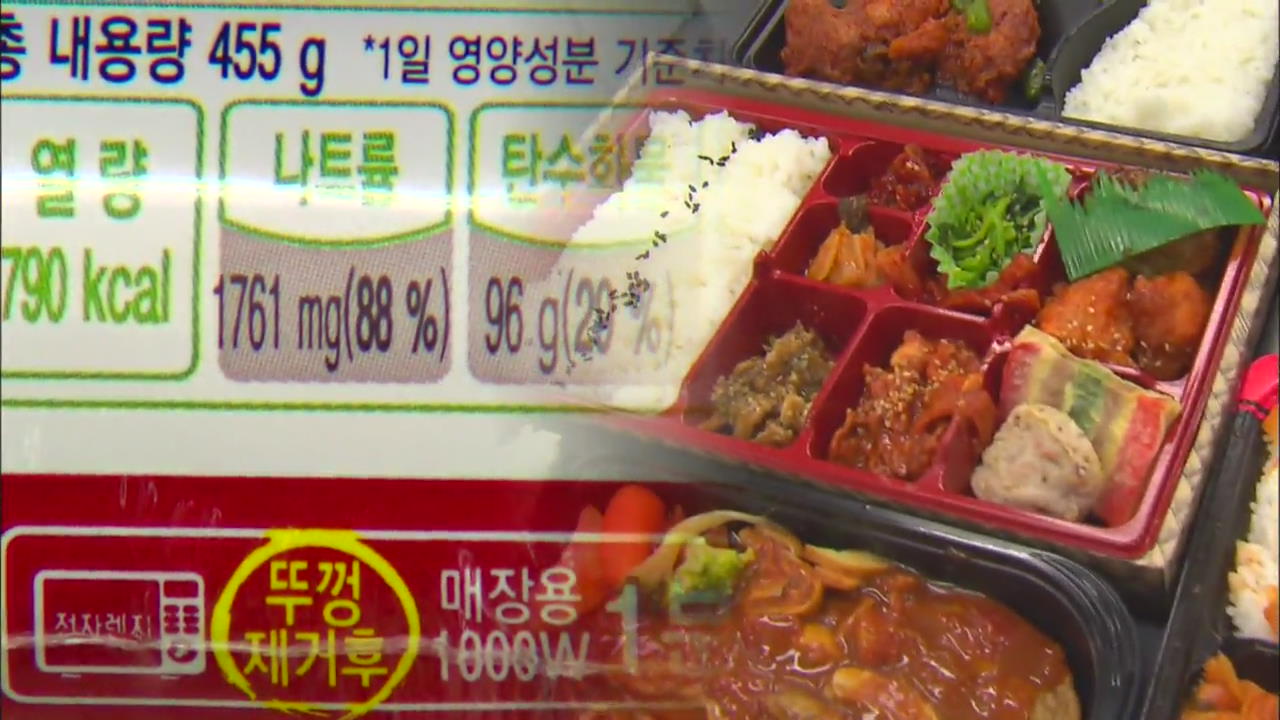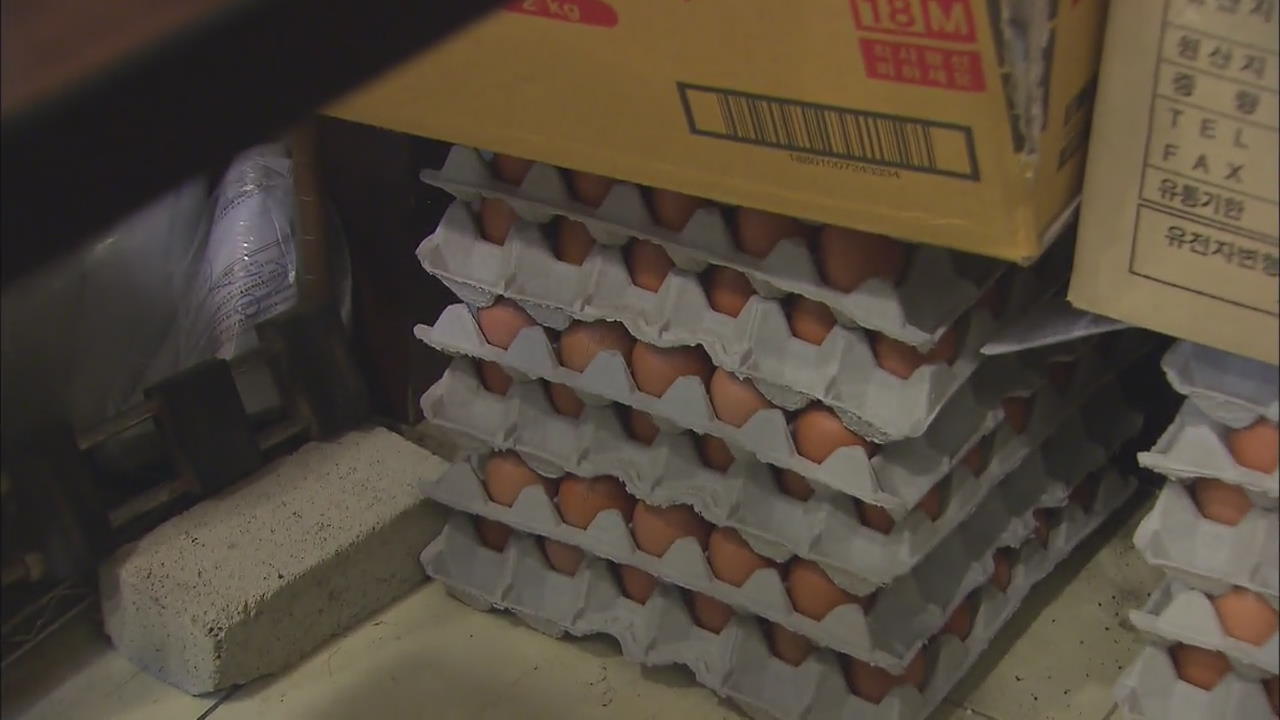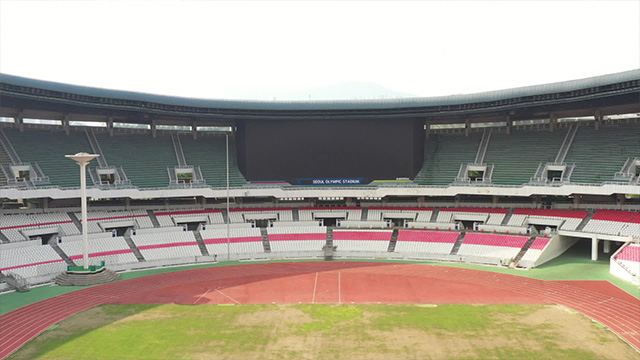Sodium Intake
입력 2016.12.22 (14:10)
수정 2016.12.22 (14:20)
읽어주기 기능은 크롬기반의
브라우저에서만 사용하실 수 있습니다.
[Anchor Lead]
As more people prefer to eat alone, sales of instant meals at convenience stores have nearly tripled over the past year. But a nutritional study has found that many of convenience store lunch options contain too much sodium. Here are the details.
[Pkg]
Lunch boxes are a best-selling item at convenience stores during the lunch break on a weekday. The quick, convenient lunch option is especially popular among those who opt to eat alone.
[Soundbite] Kang Jae-shin(Office Worker) : "I usually opt for convenient store lunches when I don't have enough time or when I want to eat quickly and take a brief break.They are a bit salty. But I eat them because I have no other choice."
Excessive salt content was confirmed in the analysis of lunch box ingredients. A study on 20 convenience store lunch meals showed that each product contains more than 1,300 milligrams of sodium on average. That amount is nearly 70 percent of the World Health Organization's recommended daily intake of 2,000 milligrams. Lunch boxes sold at CU convenience stores contain over 370 milligrams per 100 grams on average, which is higher than the sodium content in instant ramyeon noodles. Mini Stop came in second, followed by GS 25 and 7-11. But the content of potassium, which promotes the discharge of sodium from the body, is less than half of the sodium.
[Soundbite] Roh Chang-sik(Food Safety Department, Seoul City Government) : "It is better to add in yogurt, cheese or milk,which help the discharge of sodium from the body."
It is difficult for consumers to get detailed product information of convenience store lunch meals, which are not required to list their nutritional facts, unlike hamburgers or rolled rice gimbap.
As more people prefer to eat alone, sales of instant meals at convenience stores have nearly tripled over the past year. But a nutritional study has found that many of convenience store lunch options contain too much sodium. Here are the details.
[Pkg]
Lunch boxes are a best-selling item at convenience stores during the lunch break on a weekday. The quick, convenient lunch option is especially popular among those who opt to eat alone.
[Soundbite] Kang Jae-shin(Office Worker) : "I usually opt for convenient store lunches when I don't have enough time or when I want to eat quickly and take a brief break.They are a bit salty. But I eat them because I have no other choice."
Excessive salt content was confirmed in the analysis of lunch box ingredients. A study on 20 convenience store lunch meals showed that each product contains more than 1,300 milligrams of sodium on average. That amount is nearly 70 percent of the World Health Organization's recommended daily intake of 2,000 milligrams. Lunch boxes sold at CU convenience stores contain over 370 milligrams per 100 grams on average, which is higher than the sodium content in instant ramyeon noodles. Mini Stop came in second, followed by GS 25 and 7-11. But the content of potassium, which promotes the discharge of sodium from the body, is less than half of the sodium.
[Soundbite] Roh Chang-sik(Food Safety Department, Seoul City Government) : "It is better to add in yogurt, cheese or milk,which help the discharge of sodium from the body."
It is difficult for consumers to get detailed product information of convenience store lunch meals, which are not required to list their nutritional facts, unlike hamburgers or rolled rice gimbap.
■ 제보하기
▷ 카카오톡 : 'KBS제보' 검색, 채널 추가
▷ 전화 : 02-781-1234, 4444
▷ 이메일 : kbs1234@kbs.co.kr
▷ 유튜브, 네이버, 카카오에서도 KBS뉴스를 구독해주세요!
- Sodium Intake
-
- 입력 2016-12-22 14:12:06
- 수정2016-12-22 14:20:48

[Anchor Lead]
As more people prefer to eat alone, sales of instant meals at convenience stores have nearly tripled over the past year. But a nutritional study has found that many of convenience store lunch options contain too much sodium. Here are the details.
[Pkg]
Lunch boxes are a best-selling item at convenience stores during the lunch break on a weekday. The quick, convenient lunch option is especially popular among those who opt to eat alone.
[Soundbite] Kang Jae-shin(Office Worker) : "I usually opt for convenient store lunches when I don't have enough time or when I want to eat quickly and take a brief break.They are a bit salty. But I eat them because I have no other choice."
Excessive salt content was confirmed in the analysis of lunch box ingredients. A study on 20 convenience store lunch meals showed that each product contains more than 1,300 milligrams of sodium on average. That amount is nearly 70 percent of the World Health Organization's recommended daily intake of 2,000 milligrams. Lunch boxes sold at CU convenience stores contain over 370 milligrams per 100 grams on average, which is higher than the sodium content in instant ramyeon noodles. Mini Stop came in second, followed by GS 25 and 7-11. But the content of potassium, which promotes the discharge of sodium from the body, is less than half of the sodium.
[Soundbite] Roh Chang-sik(Food Safety Department, Seoul City Government) : "It is better to add in yogurt, cheese or milk,which help the discharge of sodium from the body."
It is difficult for consumers to get detailed product information of convenience store lunch meals, which are not required to list their nutritional facts, unlike hamburgers or rolled rice gimbap.
As more people prefer to eat alone, sales of instant meals at convenience stores have nearly tripled over the past year. But a nutritional study has found that many of convenience store lunch options contain too much sodium. Here are the details.
[Pkg]
Lunch boxes are a best-selling item at convenience stores during the lunch break on a weekday. The quick, convenient lunch option is especially popular among those who opt to eat alone.
[Soundbite] Kang Jae-shin(Office Worker) : "I usually opt for convenient store lunches when I don't have enough time or when I want to eat quickly and take a brief break.They are a bit salty. But I eat them because I have no other choice."
Excessive salt content was confirmed in the analysis of lunch box ingredients. A study on 20 convenience store lunch meals showed that each product contains more than 1,300 milligrams of sodium on average. That amount is nearly 70 percent of the World Health Organization's recommended daily intake of 2,000 milligrams. Lunch boxes sold at CU convenience stores contain over 370 milligrams per 100 grams on average, which is higher than the sodium content in instant ramyeon noodles. Mini Stop came in second, followed by GS 25 and 7-11. But the content of potassium, which promotes the discharge of sodium from the body, is less than half of the sodium.
[Soundbite] Roh Chang-sik(Food Safety Department, Seoul City Government) : "It is better to add in yogurt, cheese or milk,which help the discharge of sodium from the body."
It is difficult for consumers to get detailed product information of convenience store lunch meals, which are not required to list their nutritional facts, unlike hamburgers or rolled rice gimbap.
이 기사가 좋으셨다면
-
좋아요
0
-
응원해요
0
-
후속 원해요
0

















이 기사에 대한 의견을 남겨주세요.